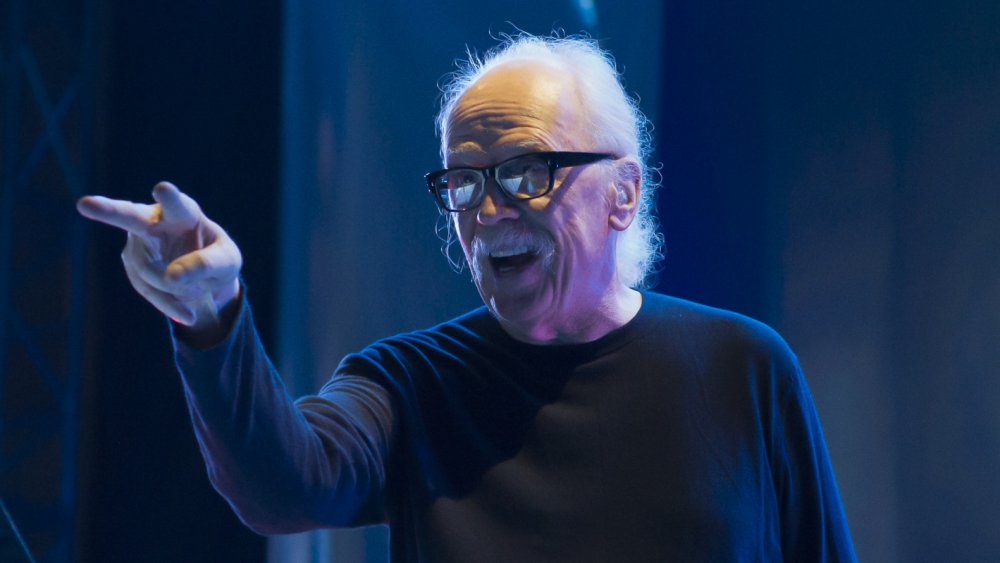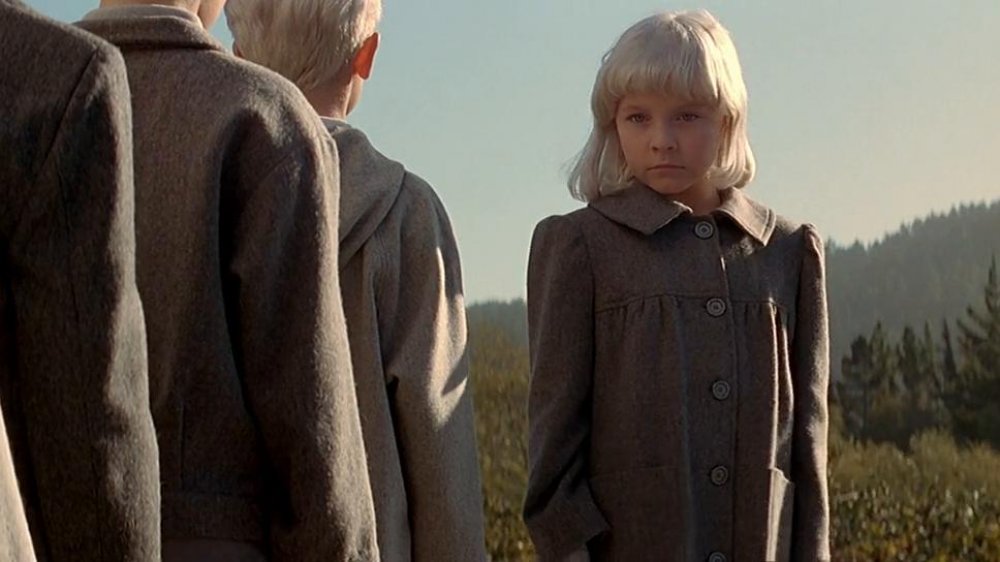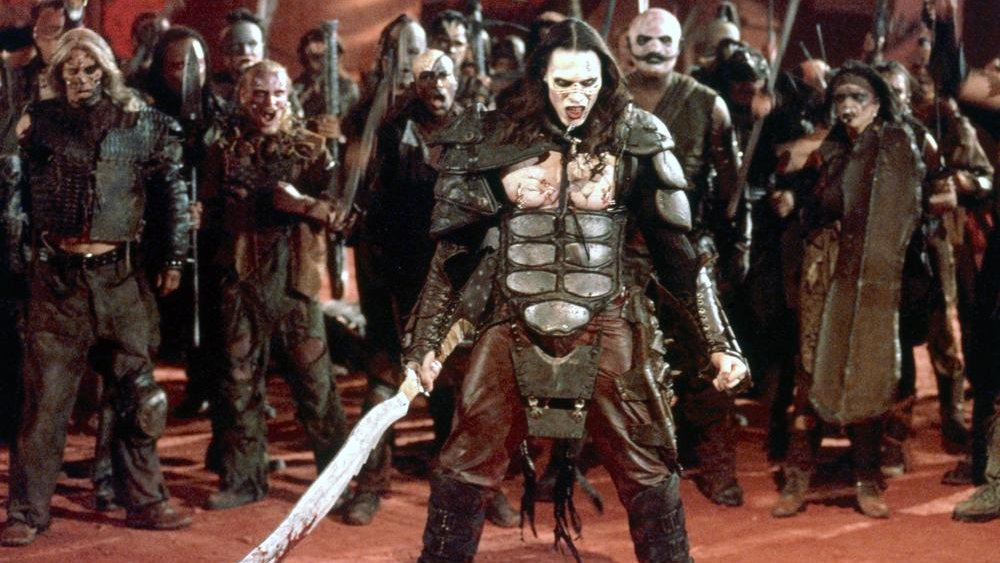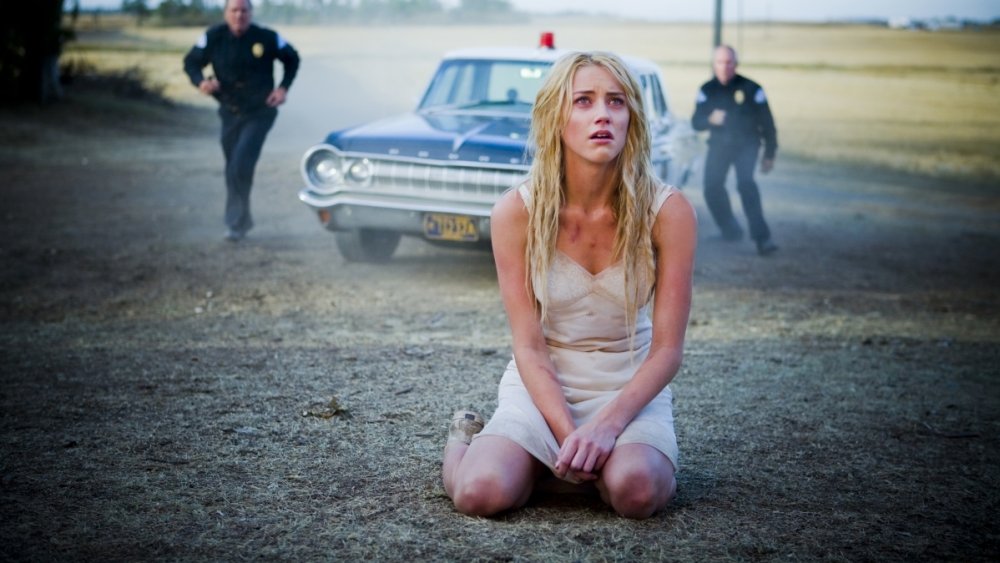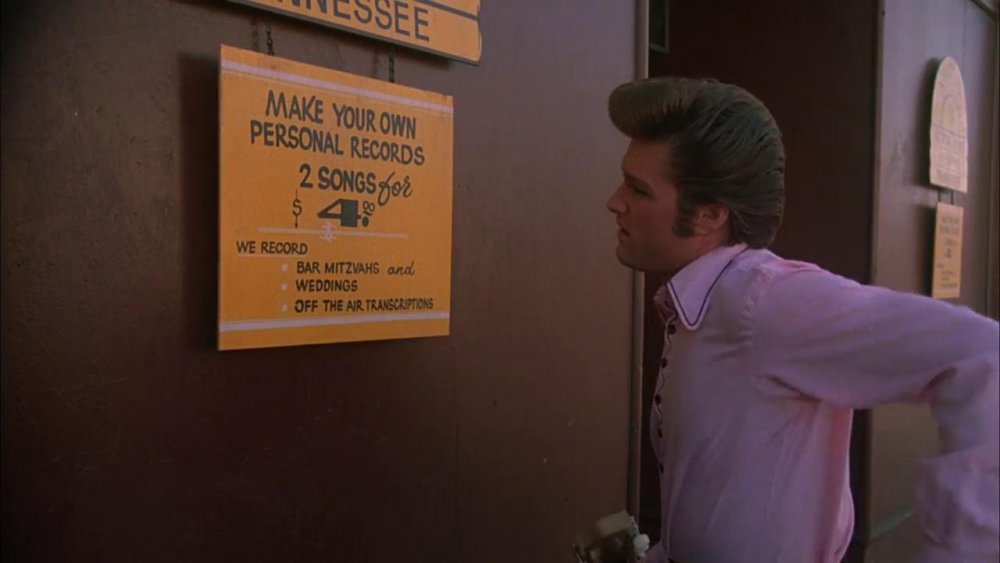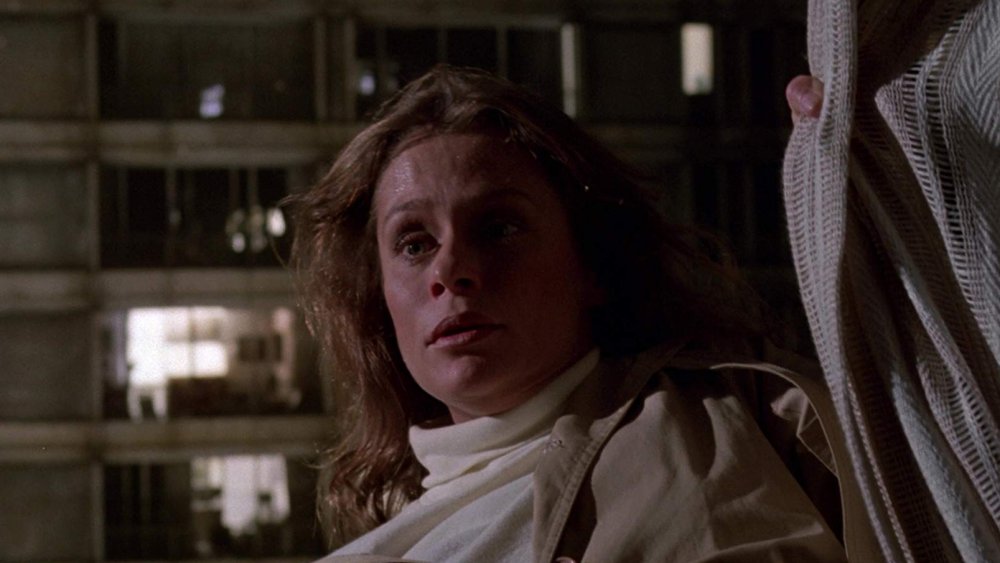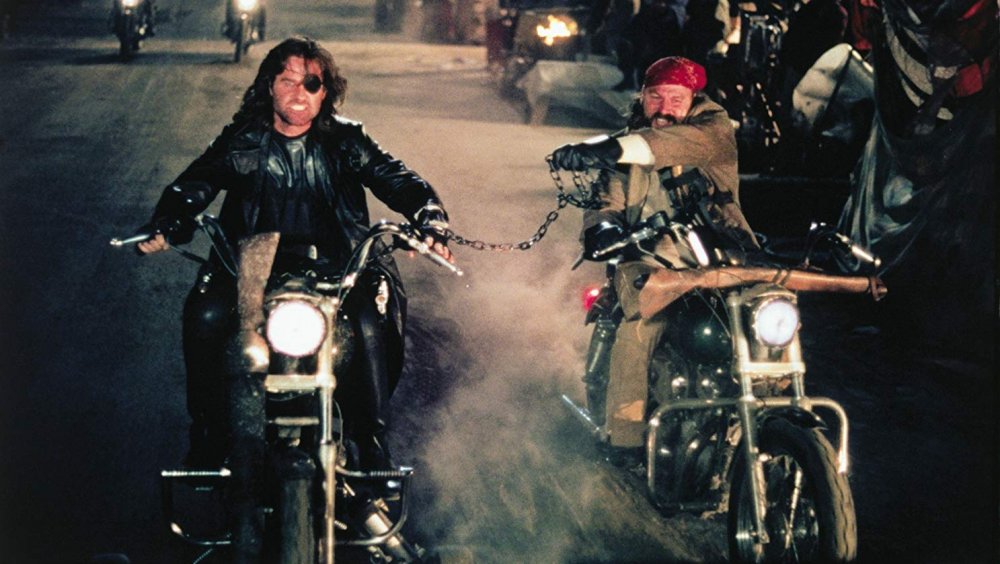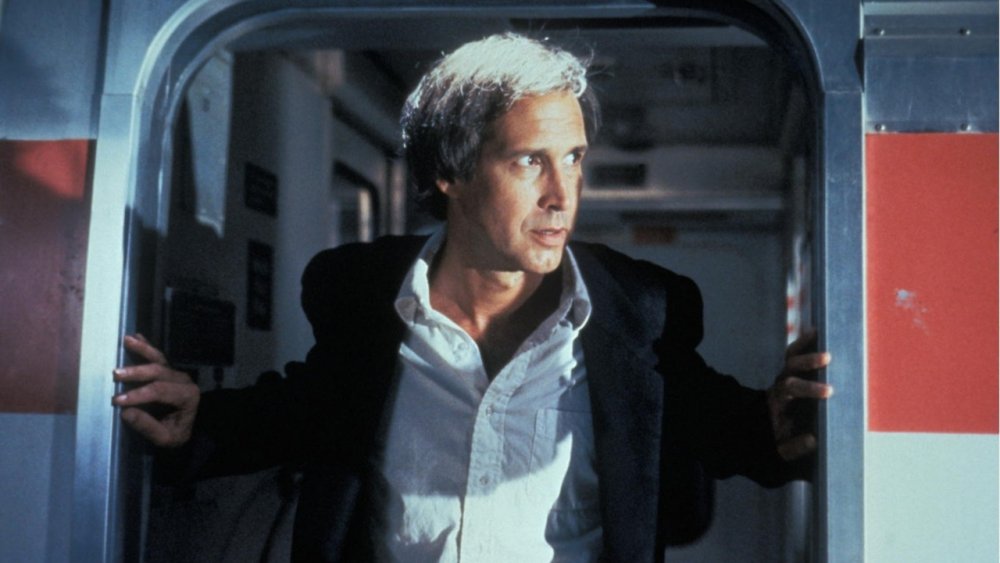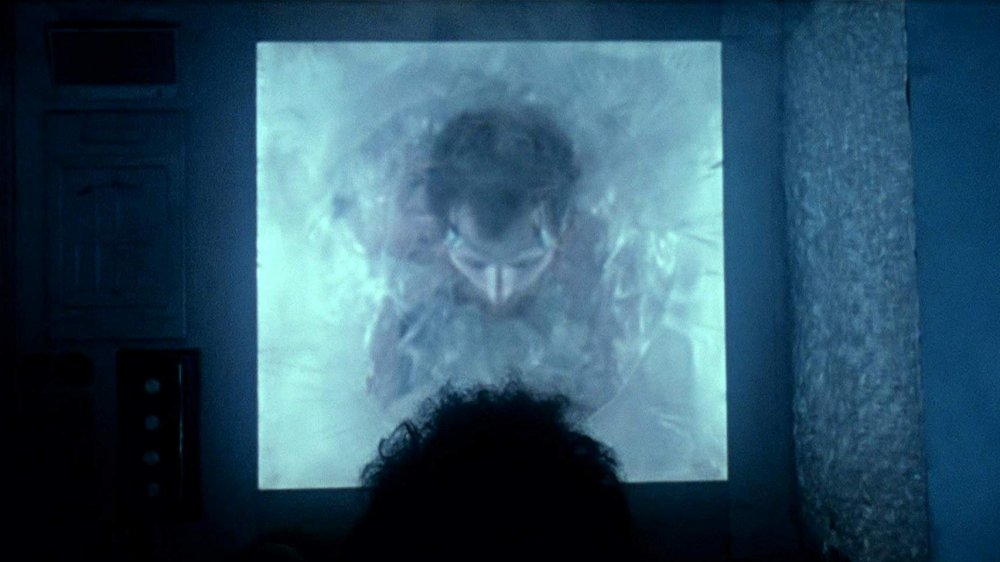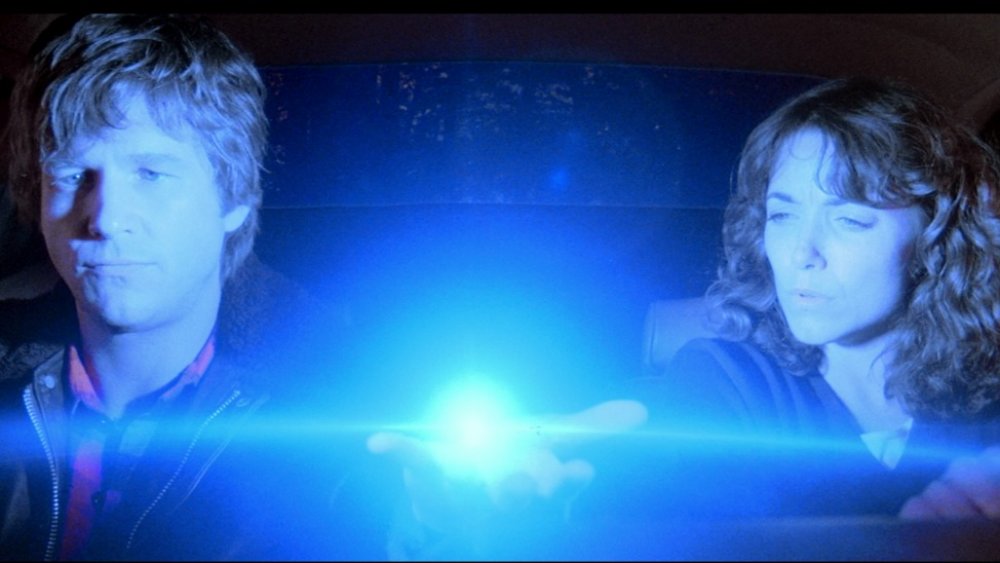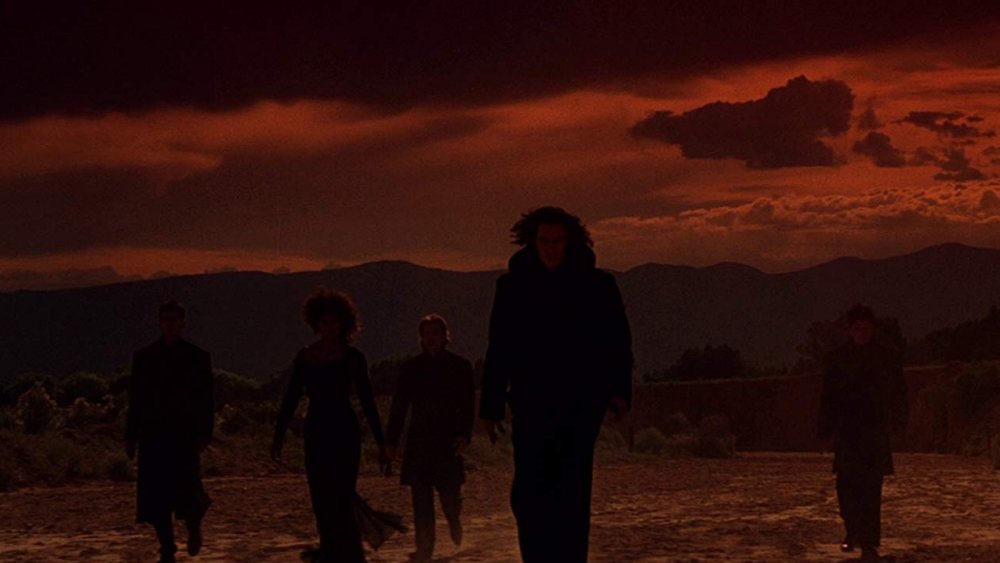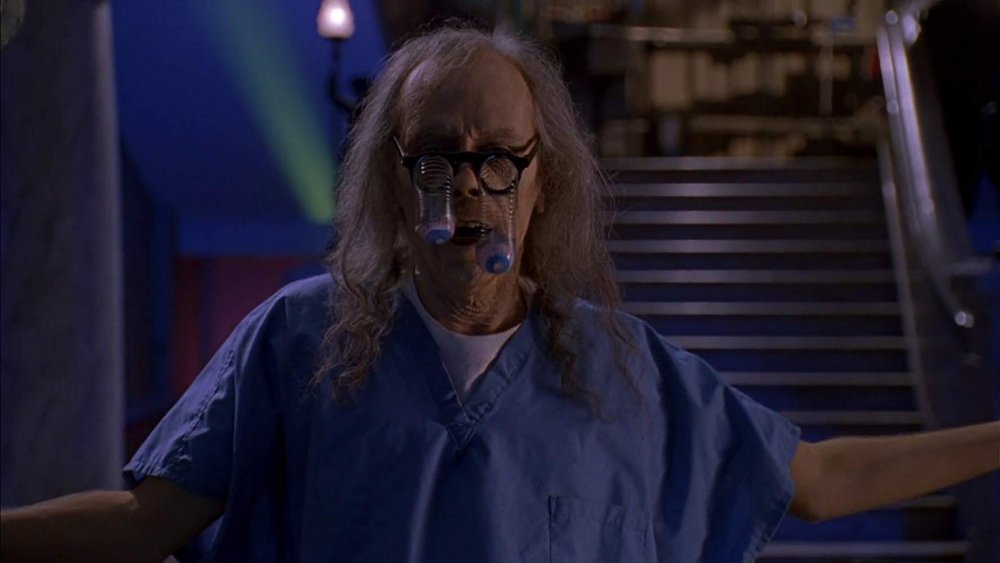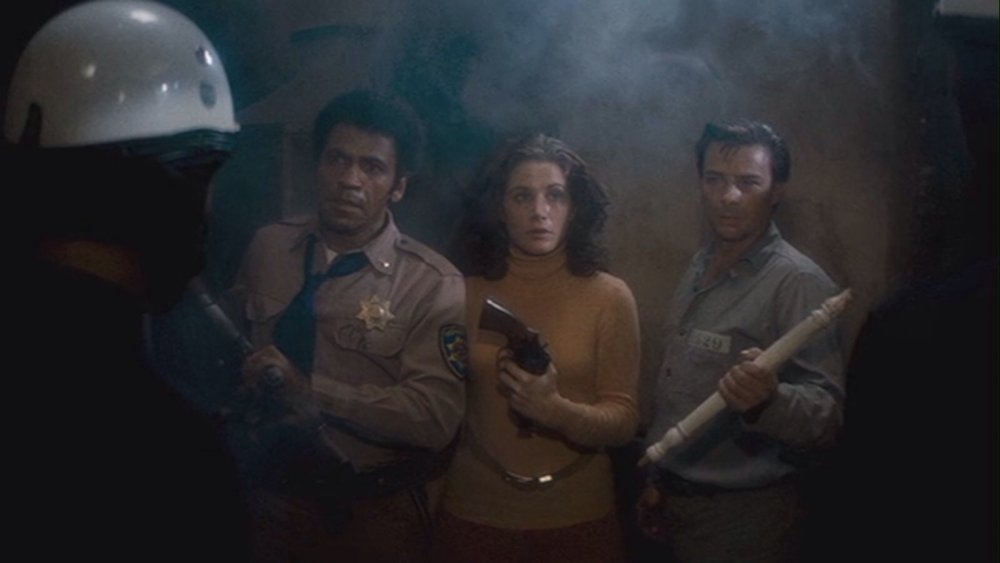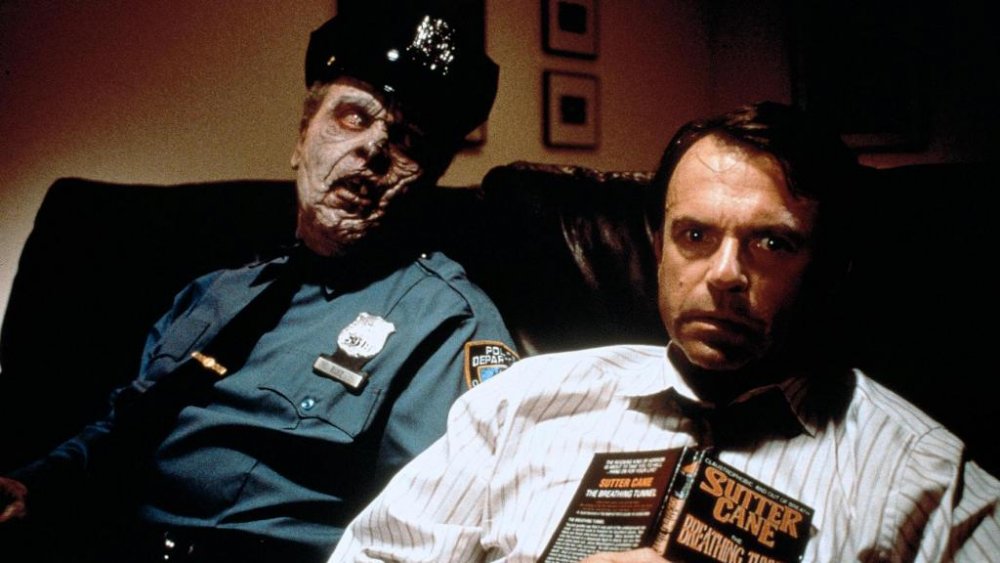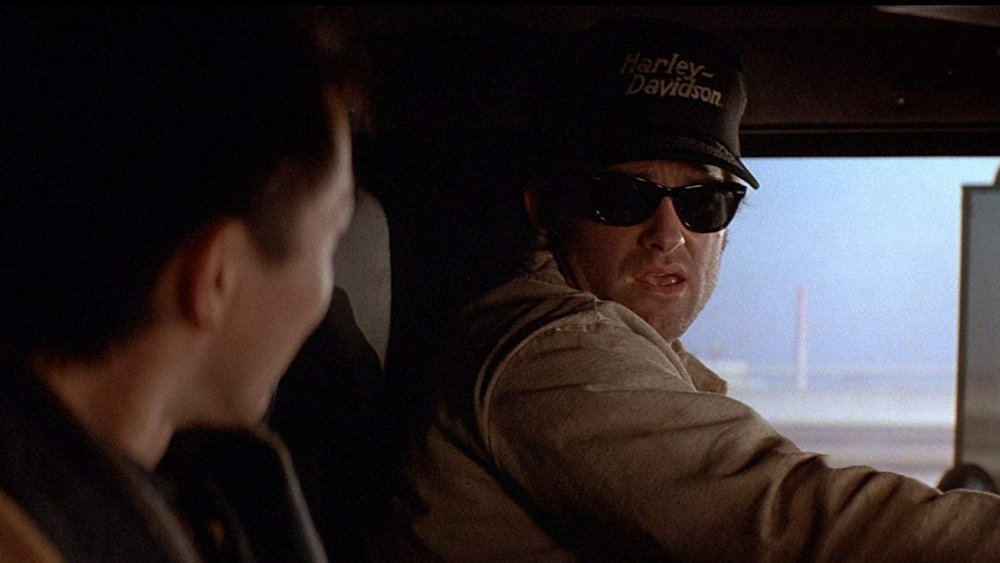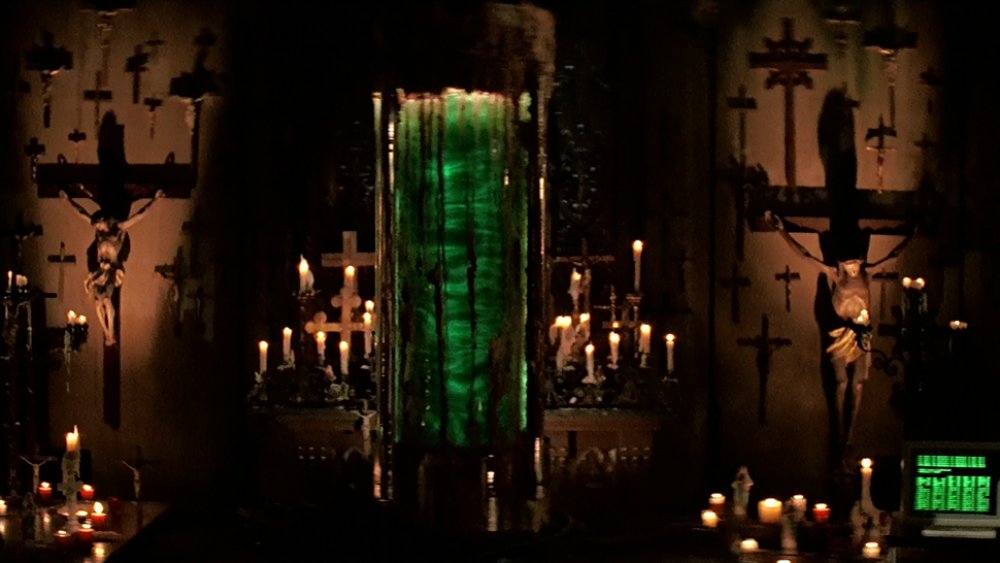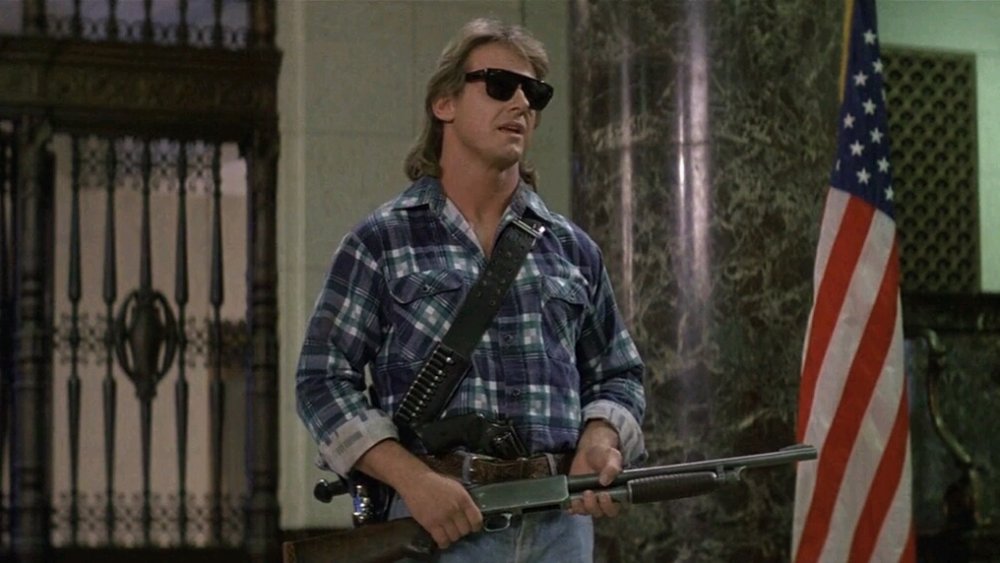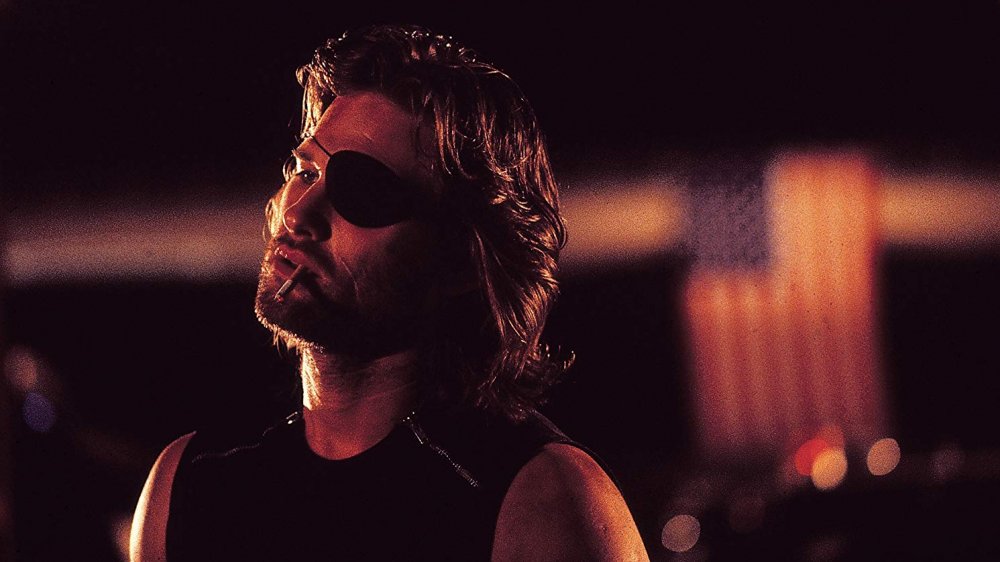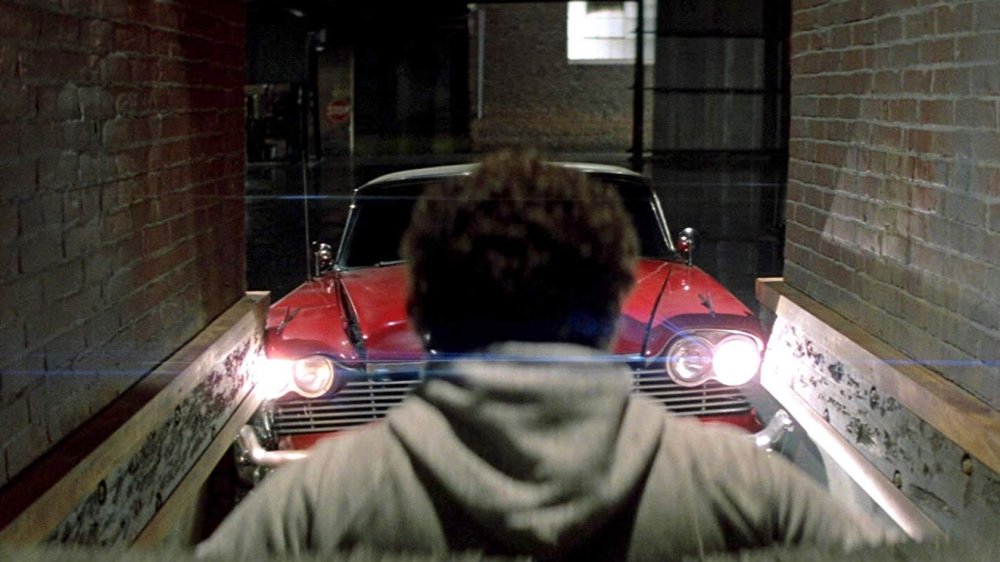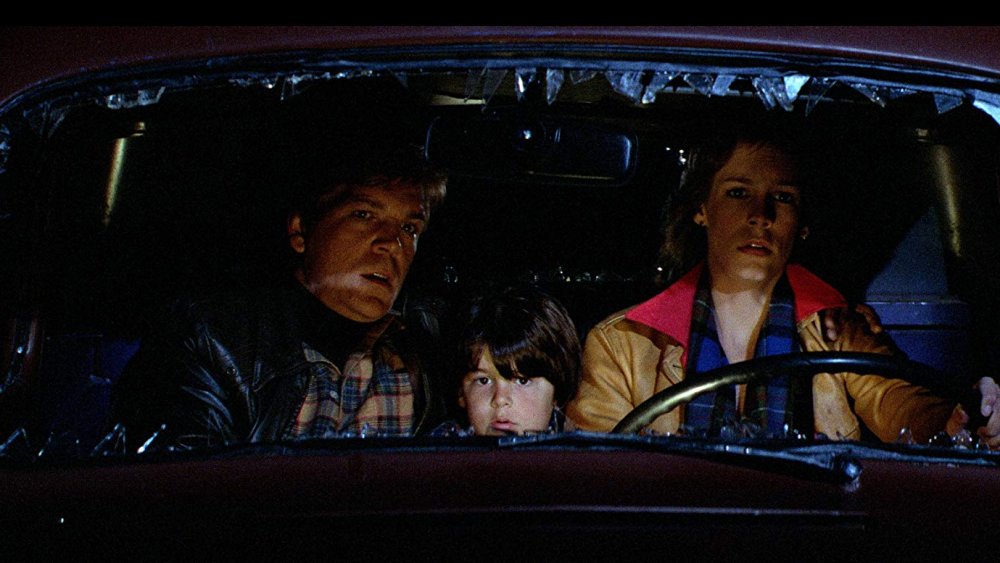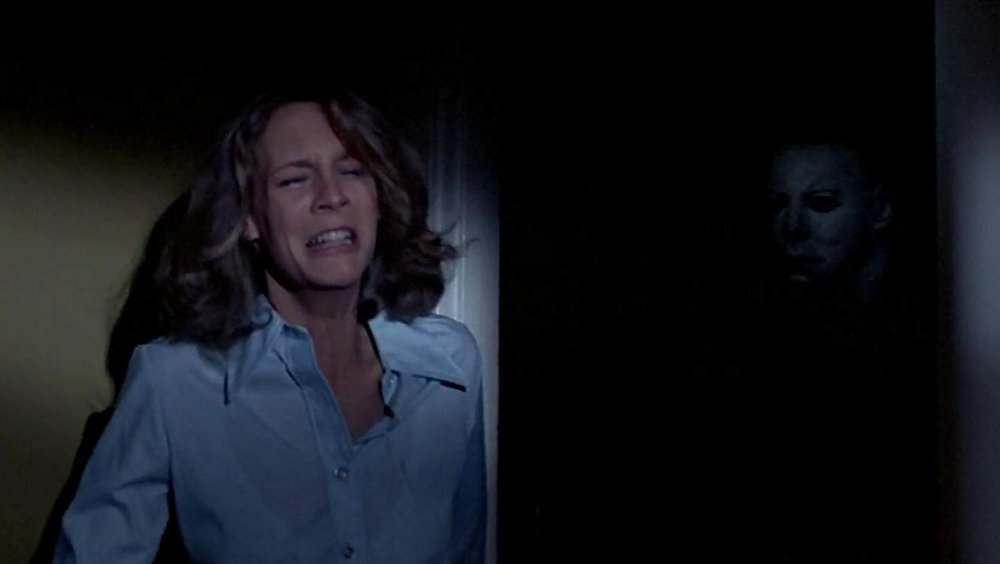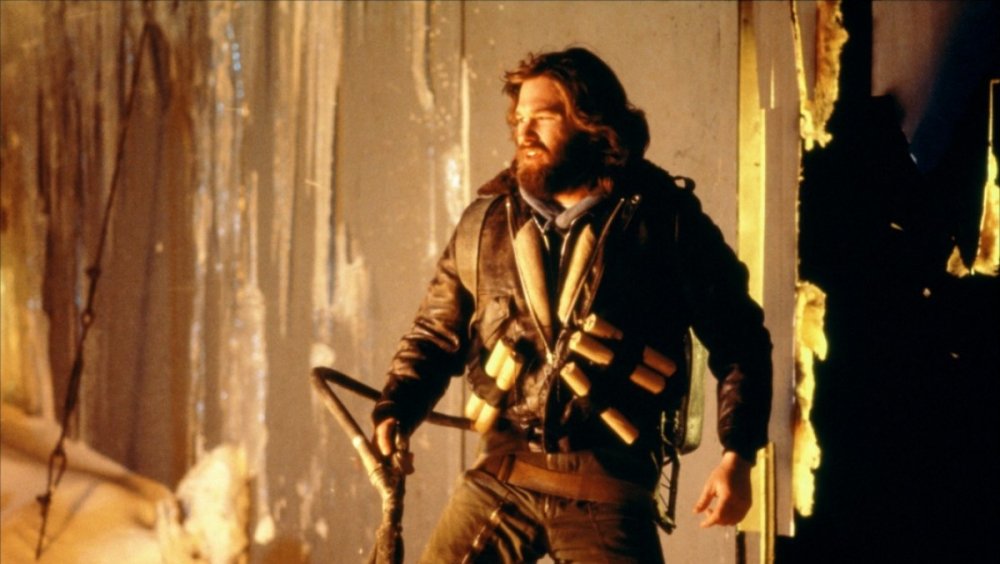Every John Carpenter Movie, Ranked Worst To Best
When Halloween season rolls around, movie lovers everywhere start their personally curated horror movie marathons in earnest. Whether they're watching various scary movies for the first time or returning to old favorites, John Carpenter is almost always going to come up as part of the Halloween viewing conversation. After all, this is the man who made Halloween, a film that warps the spooky fun holiday into a babysitter's worst nightmare. He also directed numerous other classics — including The Thing, Christine, The Fog, and Prince of Darkness — in the horror genre. John Carpenter's name is so synonymous with horror films that, when he joined Twitter, he took the handle "@TheHorrorMaster."
John Carpenter and horror films go together like Michael Myers and big kitchen knife, but if you really want to dive deep into his filmography, you'll find a surprisingly eclectic body of work. Yes, the horror masterpieces are all there, but so are sci-fi comedies, space voyage parodies, alien romances, and even a musical biopic. In a career spanning five decades and nearly two dozen feature films, Carpenter's told a lot of stories, and we're here to talk about them all. This is every John Carpenter movie, ranked worst to best.
Village of the Damned
In 1995, Carpenter released this remake of the 1960 sci-fi horror classic of the same name, about a strange group of children born out of a supernatural event who then begin to hold their small town hostage with psychic abilities and an apparent lack of humanity. The film features an ensemble cast that includes Christopher Reeve (in his final role before an equestrian accident left him paralyzed), Mark Hamill, Kirstie Alley, Meredith Salenger, and more, along with plenty of spooky atmosphere courtesy of Carpenter's ever-present widescreen camera.
Let's be clear: Village of the Damned may be at the bottom of this list, but it is by no means a terrible film. It's got buckets of atmosphere, a compelling cast, and when the Spooky Kids are doing their Spooky Kid stuff, it sucks you in. That said, the film is among Carpenter's slowest-moving endeavors. It seems to creep (not in a good way) from horror beat to horror beat to horror beat, leaving long stretches where the viewer is less than compelled. Carpenter once said Village of the Damned was a film he wasn't particularly passionate about making. Revisiting it all these years later, it shows.
Ghosts of Mars
Ghosts of Mars, one of Carpenter's last directorial efforts to date, is the story of a group of police officers on Mars in a future where humanity has terraformed the Red Planet and set up a society there. The cops are just supposed to be picking up a notorious prisoner for transport, but when they arrive at their destination, they find that ancient Martian spirits have emerged to possess every human in sight, and they have no choice but to fight their way out.
It's basically Assault on Precinct 13 with space ghosts, and while that's fun in some form no matter how you slice it, Ghosts of Mars is never quite as fun as it seems to think it is. Carpenter was aiming for deliberate sci-if action camp with this film, and he definitely hits his mark more often than not. The trouble is that the campy tropes often repeat themselves, the film's visual effects can't rise to the occasion, and even the intentionally over-the-top stuff doesn't always register that way. The result is an uneven but fun little sci-fi thriller that, while far from Carpenter's best, is still worth seeing for the frequent appearances of Martian ghosts who seem to be followed by heavy metal guitars everywhere they go.
The Ward
John Carpenter's final directorial effort to date is this period horror piece about a group of girls in a mental institution who are stalked by a supernatural killer. The Ward was released in 2010, but it retains a certain timeless quality thanks to Carpenter's ever-present widescreen photography. The setting straightforward enough that he could have made it at any point in his career. The atmospheric photography and pacing are classic Carpenter, and they make The Ward worth seeking out for fans of the master.
Unfortunately, the atmosphere is not enough to overcome The Ward's formulaic story, which builds to a twist that's not only been done before in other horror films, but done better. Even if the twist did land in a more satisfying way, the film also lacks the fine strokes of character building that Carpenter executed so well in some of his better work, so the film's resolution doesn't pay off as well as it could have. That said, the central antagonist of the film is decidedly creepy, and when The Ward is in full scare mode, it's clear that Carpenter hasn't lost a step in that department.
Elvis
Between Halloween and The Fog, Carpenter took a couple of gigs as a TV movie director, and of those two, Elvis is the most ambitious. Released less than two years after the King of Rock 'n' Roll's death, the film is an epic look (clocking in at two and a half hours) at Elvis Presley's life from his childhood up until the beginning of his Las Vegas era. Starring in the title role is Kurt Russell, marking the beginning of his long collaboration with Carpenter.
Though it perhaps feels out of place amid his most famous films, Carpenter is no less gifted when it comes to telling the story of Elvis Presley, and it certainly helped matters that he had someone as charismatic as Russell leading the way. Elvis works as what it is, which is a very straightforward made-for-TV biopic with a few kinks (including some issues with the sound mixing and syncing) that are never quite ironed out. These days it might only be sought out by Elvis superfans and Carpenter completionists, but the director did his job and he did it well.
Someone's Watching Me!
Carpenter's other major TV movie gig in the late 1970s was this straightforward thriller about a live TV director (Lauren Hutton) who takes a new job in Los Angeles. She moves into a sleek new high-rise apartment building, only to find that she's also attracted a terrifying new stalker in the process.
Carpenter has been compared to Alfred Hitchcock in terms of the way he builds and releases tension, and Someone's Watching Me! might be the most straightforward showcase of his Hitchcockian gifts in his entire filmography. The film plays in some places like a riff on Rear Window, and Carpenter's screenplay is full of the kind of witty banter that you could easily imagine someone like Grace Kelly or Tippi Hedren rattling off. It's also chock full of tension, and the lead performances from Hutton and Adrienne Barbeau are consistently compelling. It's not as flashy or ambitious as Carpenter's best work, but Someone's Watching Me! still works as a well-executed TV thriller.
Escape from L.A.
There aren't a lot of sequels in John Carpenter's filmography, perhaps because of his bad experience with trying to deliver follow-ups to Halloween back in the late 1970s and early '80s, but 15 years after Escape from New York hit theaters, Carpenter decided to return to that post-apocalyptic world and its eyepatch-clad hero, Snake Plissken (Kurt Russell).
Escape from L.A. is set 16 years after the original, and follows Snake as he is once again offered a shot at freedom if he's willing to help the United States government by completing a near-impossible mission with a ticking clock. This time around he's sent into Los Angeles, which has become an island thanks to an earthquake years earlier and which has been transformed into another prison wasteland thanks to a new president who has ushered in a theocracy.
The film works best when Carpenter is playing in the new sandbox of ambitious dystopian ideas he's built for himself, but the film never quite coalesces in the way that its predecessor did. There are a lot of interesting things happening in this movie, and Russell is charismatic as ever, but it suffers by virtue of being a sequel to one of the great cult sci-fi films.
Memoirs of an Invisible Man
If any Carpenter film deserves the title of "Most Underrated," it might be Memoirs of an Invisible Man, a movie that seems to have been all but forgotten amid Carpenter's more high-profile efforts, but deserves to be remembered. The film stars Chevy Chase as Nick, a stock analyst whose life is upended when he goes to a shareholders meeting at a tech firm and, as the result of an accident, wakes up to find himself invisible. With a government agent (Sam Neill, having loads of fun as a villain) on his trail and a new love interest (Daryl Hannah) wondering what happened to him, Nick has to figure out how to adjust to life as an unseen presence.
Though it suffers from a lot of formulaic story beats, Carpenter is clearly having fun spinning a noir-influenced tale of a man recounting his own zany sci-fi adventures, and Chase pours a considerable amount of screen presence into his performance, even when you can't see him. Throw in some wonderful and very playful visual effects, and Memoirs of an Invisible Man is a sci-fi comedy that deserves to be seen by more people.
Dark Star
Carpenter's first feature film is this strange sci-fi spoof from 1974, which began as a student film and later evolved into a theatrically-released effort that remains impressive in its ingenuity and comedic sensibility. Co-written by Carpenter and Dan O'Bannon (who also stars, and would go on to write a little movie called Alien a few years later), Dark Star follows the crew of the titular spaceship on a long-term mission into deep space where everything seems to be going wrong.
Dark Star is a parody of ponderous science fiction fare like 2001: A Space Odyssey. As a result, plot points include everything from a commander in cryogenic stasis as the result of an accident to an artificially intelligent bomb that keeps trying to drop itself out of the ship and detonate due to an error. It drags in places and certainly plays as amateurish and others, but you can see the talent at work here. It's not just "good for a student film" — it's genuinely fun, inventive, and subversive.
Starman
The long story of how Starman finally made it to the screen is almost as interesting as the film itself, which follows a widow (Karen Allen) who encounters an alien being (Jeff Bridges) who assumes the form of her late husband upon arriving on Earth. The film went through various permutations and numerous directors on its way to the screen. By the time Carpenter got hold of it, he was eager to make a film that allowed him to break out of the particular genre mold he'd worked himself into by the mid-1980s, and saw Starman as an opportunity to do a cross-country love story with sci-fi elements.
The result is a slow burning, beautifully photographed film that allows Carpenter to do things like portray the majesty of Monument Valley and mine the seemingly infinite charm Karen Allen can convey with a single smile. It's far from the most thrilling thing Carpenter ever produced, but he did what he set out to do. Starman is a warm, lingering sci-fi love story anchored by two compelling stars.
Vampires
John Carpenter is at his best when he's working with a killer conceptual hook, and Vampires is another example of that. It's far from his best high-concept genre flick, but when this mean little movie — about vampire hunters and a master blood drinker intent on ending the world — is really cooking, it's among Carpenter's most fun outings.
The film follows master vampire hunter Jack Crow (James Woods) and his crew of Vatican-sanctioned slayers as they try to root out a master vampire (Thomas Ian Griffith) who's angling to perform an ancient ritual that will blot out the sun forever, turning Earth into a vampire's paradise. The film kicks off as Crow and his team are raiding a vampire nest, establishing the rules of the game, and then we get to watch as Carpenter methodically dismantles everything we think we know about how this game is played. It's part horror film and part Western showdown, and while it doesn't pack the same level of tension and emotional investment as his best work, Vampires is still a blast to watch.
Body Bags
Do you like Creepshow? Do you like John Carpenter? Do you ever wish John Carpenter had directed some of Creepshow? If so, Body Bags is definitely for you.
Carpenter and fellow horror legend Tobe Hooper (The Texas Chain Saw Massacre) teamed up for this horror comedy anthology film, which aired on Showtime in 1993, and the result is a fun collection of spooky stories that's pretty much Carpenter's version of Creepshow, in a very good way. Carpenter directed two of the film's three segments, "The Gas Station" and "Hair," and also starred as the "The Coroner," a master of ceremonies in the vein of the Cryptkeeper, who introduces the segments from a morgue where he's working late.
Though it displays a predictable unevenness between the various segments ("The Gas Station" is far and away the best, and it leads things off), Body Bags is an immensely fun look at what happens when two horror masters get together with some of their friends — including cameos from Wes Craven, Roger Corman, Sam Raimi and more — and essentially just get to goof off with a handful of scary stories.
Assault on Precinct 13
Carpenter's second feature film is also the first of several of his movies to ultimately get the remake treatment, as well as the film that earned him the kind of attention that later led to Halloween. It's also a cult masterclass in how to do low-budget suspense right.
Assault on Precinct 13 is set almost entirely in the titular police precinct, where a pair of cops and a pair of administrative workers are preparing to close up the facility entirely so the precinct can move to a new location. Before they can do that, though, a traumatized man runs in looking for help after killing a member of a local street gang. The gang, already angered by a recent massacre of their people by the LAPD, declare all-out war, and the people inside the precinct prepare to try and survive the night as bloodthirsty criminals close in on them.
Stripped down, tightly plotted and full of tense moments, Assault on Precinct 13 is Carpenter's first showcase of his gift for suspense and inventively staged action. All the great stuff we'd later see in films like The Thing and The Fog exists in an early form here, and it still holds up more than 40 years later.
In the Mouth of Madness
The last film in Carpenter's thematically linked "Apocalypse Trilogy," In the Mouth of Madness is both a tribute to horror writer H.P. Lovecraft and Carpenter's exploration of the often frightening links between fiction and reality. The film follows an insurance investigator (Sam Neill) who is tasked with tracking down a bestselling horror novelist, who's gone missing along with the manuscript to his next book. His search leads him to a New England town that's supposed to only exist on the page, but which seems to be coming to frightening life all around him.
Neill is predictably fantastic in the leading role, portraying a man who's slowly unraveling with convincing intensity, and Carpenter is clearly delighting in showing us a Lovecraftian tale of madness and doom in all its glory. In the Mouth of Madness builds and builds much like one of Lovecraft's own stories, unfolding first as a strange mystery and then exploding into monstrous ecstasy by the end. It may not stand tall with the very best of Carpenter's films, but it's still very good, and certainly ranks among his most ambitious visions of horror.
Big Trouble in Little China
Carpenter followed up Starman in 1986 with Big Trouble in Little China, another film he didn't write but hoped to use as a platform to prove that he was more than just the horror guy. This time, Carpenter hoped to translate his love of kung fu movies into his own work, and the result is a film that's both very different from the surrounding movies in his filmography, and also indicative of the same kind of swagger he displayed with They Live and Escape from New York.
Of course, if you want to make a film with swagger, having Kurt Russell along for the ride never hurts. In his fourth collaboration with Carpenter, Russell shines as Jack Burton, a trucker who's roped into an unexpected supernatural conflict among two very old Chinese factions. Russell's in-over-his-head action hero style is what anchors the film, but Carpenter's also clearly having a blast through the various scenes of magical martial arts mayhem. There's a reason Big Trouble in Little China continues to find new audiences. It might contain more pure popcorn fun than any other Carpenter flick.
Prince of Darkness
In Halloween, Carpenter played with the idea of an academic who'd come to the conclusion that evil was a real, tangible thing that couldn't be reasoned with or effectively analyzed. Prince of Darkness, the second film in Carpenter's "Apocalypse Trilogy," is an effort to further explore this same idea, as well as Carpenter's fascination with the intersection of faith and science.
The film follows a group of academics who are brought into a church to examine a strange cylinder that purportedly contains the physical embodiment of Satan. As the film progresses, they slowly become aware that the evil within the container is real, and that it wants out. Prince of Darkness is packed with intense horror moments, from a man dissolving into a pile of insects to a woman transforming into the embodiment of evil on Earth. It's one of Carpenter's best exercises in pure terror, and one of his most ambitious.
They Live
Though he's mostly thought of as a horror master, Carpenter's made almost as many classic films in the realm of science fiction as he has in that of pure scares, often overlapping the two to great effect. They Live is more sci-fi than horror, but Carpenter also turned all of his creature feature powers on for this story of an everyman wanderer (Roddy Piper) who comes upon a pair of sunglasses that reveal to him the terrible truth about the world: that humanity is being subliminally controlled by a horrific aliens in human disguises.
Piper, best known at the time as a wrestler, is fantastic in the leading role of Nada, and watching him go toe-to-toe with Keith David's Frank throughout the film is great fun. The alien "ghouls" at the center of the conspiracy in the film are at various points terrifying and hilarious, sometimes walking the line between those extremes to great effect. What really sets They Live apart as a cult classic, though, is that it's Carpenter's most finely-tuned piece of social commentary. The anti-consumerist allegories he's working with are not subtle, but he hits every note with savage perfection. It's a wickedly gleeful gem of a movie.
Escape from New York
Carpenter's best attempt at pure sci-fi adventure arrived in 1981, when he and co-writer Nick Castle (also known as the original Michael Myers) dreamed up a new future in which the island of Manhattan has been converted into a super prison where the prisoners set up their own twisted version of society. They also dreamed up one of the most memorable antiheroes in genre movie history: Kurt Russell's Snake Plissken.
Escape from New York is set up with a relatively simple action movie premise: Snake has 22 hours to go into Manhattan and rescue the President of the United States. If he fails, he dies. What makes Escape such an engrossing, memorable film is all in the journey, as Carpenter lays out in constantly engaging detail the ways in which a new world has been built among the ruins of old Manhattan. As Snake encounters character after character, we get a clearer picture of what his weird mirror image of society has become, all culminating in his encounter with the Duke of New York (Isaac Hayes). Funny, ingenuous, and beautifully realized, Escape from New York still ranks among the great dystopian films.
Christine
Christine is, to date, the only time that John Carpenter's storytelling sensibilities have met up with Stephen King's, and the result is a horror classic. Christine is, as fans will know, the name of a car that a young man named Arnie Cunningham (Keith Gordon) buys against the advice of everyone in his life. As Arnie begins to fix up the car, he becomes obsessed with it, and Christine starts to take on a mind of her own.
So, Christine is the haunted car movie, which means the movie doesn't work if you can't create a world in which the car is truly scary. Carpenter pulls it off through late night scenes of the driverless Christine ripping through the streets to run down her victims, and through some unforgettable visual effects which further drive home the supernatural prowess of this beautiful and deadly machine. Christine is a slasher movie on wheels, and in a world where so many high concepts that work on paper fail on the big screen, this time that's actually as good as it sounds.
The Fog
After nailing the slasher movie (before the genre was even really cemented, no less) with Halloween in 1978, Carpenter and his creative partner Debra Hill (whose contributions to some of his best work can never be overstated) turned to ghost stories for their next feature film. The result was The Fog, directed by Carpenter and co-written by Carpenter and Hill, who also produced.
The Fog is, in many ways, a classic vengeful spirit story, documenting the supernatural terrors that befall the town of Antonio Bay on its 100th anniversary. The date also happens to be the 100th anniversary of a great injustice upon which the town was founded. While the vengeful spirit side of things is a bit formulaic, Carpenter knocks it out of the park with the atmospherics.
From the opening minutes of the film, in which paranormal events start slowly creeping into town ahead of the fog, to the terrifying climax featuring a band of rotting ghosts in a church, The Fog is a beautifully shot small-town nightmare with a fantastic ensemble cast that includes Hal Halbrook, Adrienne Barbeau, and Jamie Lee Curtis. It doesn't quite have Halloween's energy, but it shows Carpenter and Hill maturing as horror storytellers, and is a masterpiece in its own right.
Halloween
Halloween is the stuff of indie filmmaking legend. Made with just $300,000 on a very short schedule and starring a then relatively untested Jamie Lee Curtis, the film ultimately become one of the most profitable movies ever made, and launched a franchise that's still kicking more than 40 years later. It also reshaped the horror genre for decades to come.
Though there are certain elements of its DIY production style that can still be nitpicked today (note the palm trees in the background of what is ostensibly Illinois in October), Halloween is that rare horror film that actually lives up to all the hype, even if you're watching it for the first time decades after it was first released. Carpenter and co-writer/producer Debra Hill do so much with so little, crafting a spooky little world in Haddonfield Illinois and then filling it with characters we truly like, only to wrap the knots of tension around their necks and tighten them until they snap. From the opening Steadicam shot to those final, ominous moments, Halloween remains a landmark film that's often imitated but very, very rarely matched.
The Thing
A research station in the middle of nowhere, a group of men in way over their heads, and an alien organism that can take the form of anything it touches with often gruesome results. These are the elements that launch John Carpenter's greatest masterpiece, a film so thick with paranoia and so packed with awesome gore effects that, no matter how many times you've seen it, you somehow always end up on the edge of your seat.
There are so many things to love about The Thing, Carpenter's love letter to sci-fi creature features, but the thing most people gravitate to right away is visual effects master Rob Bottin's otherworldly creature effects. The film is packed with unforgettable moments of gore and mutated mayhem, from defibrillator paddles disappearing into a chest to a severed head growing legs and antennae and scuttling off into the darkness. Carpenter takes to directing these sequences with a natural flair, but his talent for suspense particularly shines in the moments between the gore. The scene in which MacReady (Kurt Russell) ties his friends up so he can test their blood one-by-one is a masterful exercise in paranoid tension, as is the film's apocalyptic final scene. It's a brilliant exercise in terror from start to finish, and the brightest spot in a filmography full of great genre work.
